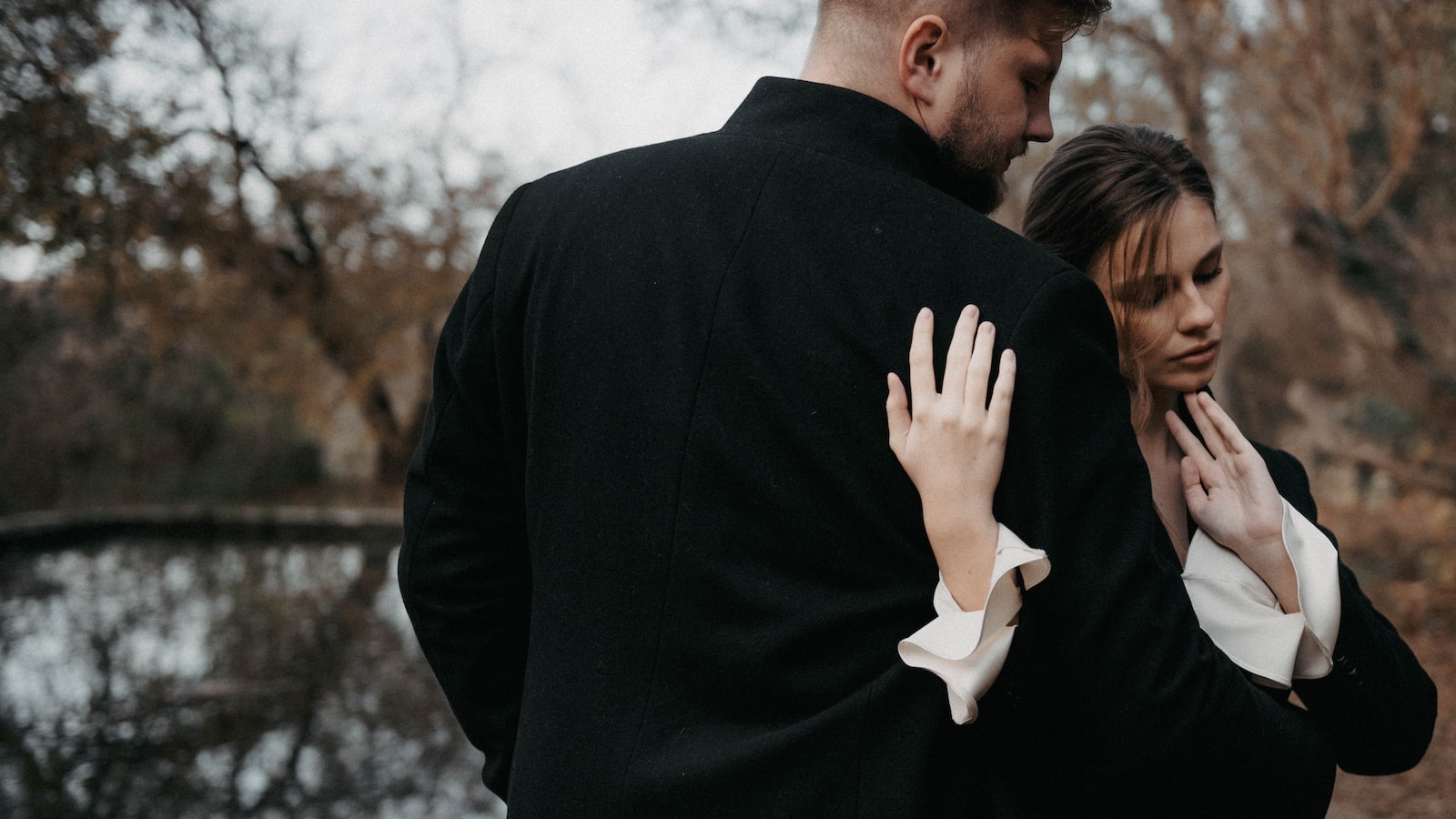Why Do You Wear Black To Funerals

The traditional practice of wearing black to funerals is steeped in centuries of history and symbolism. It is a sign of respect, honor, and solemnity, and demonstrates the deep mourning for the deceased. Wearing black to a funeral is a way of conveying sympathy for those who have lost a loved one, and it also serves as a reminder that life is transient and we should cherish every moment we are alive.Funerals are a somber occasion and wearing black is a sign of respect for the deceased. Black is a color of mourning, and wearing it to funerals is a way to show that the attendees are there to pay their respects. Wearing black also helps to create an atmosphere of solemnity and reverence for the deceased. It symbolizes grief, sorrow, and solemnity, which are all appropriate emotions for a funeral setting. Additionally, wearing black can help unify those in attendance, creating a sense of solidarity for the family and friends of the deceased.
Historical Significance of Wearing Black to Funerals
The practice of wearing black to funerals has a long and storied history. From the earliest days of civilization, black clothing has been used to express mourning and sorrow for the deceased. In ancient Egypt, the color was associated with death and the afterlife, and people would often wear it in remembrance of those who had passed away. In medieval Europe, it was customary for mourners to dress in all black when attending funerals, a practice that has continued to this day. Even today, many people still choose to wear black to funerals as a sign of respect for the deceased and their family.
Black clothing is also associated with solemnity and reverence. It is a sign of deep mourning, but also a way of showing respect for the deceased. In some cultures, wearing black is believed to help ward off evil spirits from disturbing the funeral proceedings. It is also said that wearing dark colors can help protect the mourner from emotional distress during such a difficult time.
In addition to its symbolic significance, wearing black to funerals can also be seen as an act of solidarity amongst mourners. By dressing in similar attire, those attending can show their support for one another during this trying time and be reminded that they are not alone in their grief. Whether worn out of tradition or personal preference, black clothing is always appropriate at a funeral as long as it is tasteful and respectful.
In conclusion, wearing black to funerals is steeped in tradition and holds deep meaning throughout many cultures around the world. It is an outward expression of respect for the deceased and a way for mourners to come together during this difficult time.
Expressing Respect and Sympathy at Funerals
Expressing respect and sympathy to the family of the deceased is an important part of attending a funeral. It is important to show respect for the departed, as well as to the family and friends they have left behind. Respect can be expressed through words of condolence, gestures of support, or actions that demonstrate your understanding of their grief.
When attending a funeral, it is important to dress appropriately for the occasion. A suit or other formal attire is usually appropriate for a funeral, depending on the wishes of the deceased or their family. It is not necessary to bring a gift; however, many people will bring flowers or other small tokens as a sign of respect and sympathy.
The most important way to express respect and sympathy at a funeral is through words. These can include expressing your condolences to those in mourning, offering kind reflections on the life of the person who has died, or just listening with an open heart when someone else shares memories or stories about them. It is also appropriate to offer assistance in any way needed during this difficult time.
It can also be helpful to provide practical support to those grieving by offering help with meals or errands that they may not have time for during their time of mourning. Simple gestures like bringing food or drinks can go a long way in showing your sympathies and support for those affected by loss.
During times of bereavement, it is natural for people to want to express their own sorrows and feelings about the death they are experiencing. While it may be hard for some people to find the right words at such an emotionally charged moment, simply being present and attentive can be enough support in itself.
By keeping these points in mind when attending funerals, one can show proper respect and sympathy towards those who are grieving while avoiding any potentially awkward situations that might arise from not knowing what kind gesture may be appropriate in such an emotional setting.
The Tradition of Wearing Black as a Sign of Mourning
Wearing black as a sign of mourning is a longstanding tradition that has been observed by many cultures throughout history. In the Western world, wearing black can be traced back to the ancient Greeks and Romans, who used black for rituals and funerals as a sign of respect for the deceased. The practice was adopted by the Catholic Church in the Middle Ages, and became popular in Europe in the 18th century.
Today, wearing black to signify grief or sorrow is still widely accepted around the world. Many religions have specific customs or practices related to mourning attire, such as wearing all white for Chinese funerals or all-black clothing for Jewish funerals. In some cases, mourners may wear dark clothing with bright accents or patterns to signify hope amidst their grief.
Though wearing black is not always mandatory, it is considered a mark of respect for those experiencing bereavement and can be seen as an outward show of solidarity with those in mourning. It also serves to remind those who are grieving that they are not alone in their sorrow and that there are others who sympathize with their pain.
In some countries, there are even laws that dictate what clothing must be worn during mourning periods. In India, for example, widows are expected to wear only white for up to 13 months after their husbands’ deaths while newly-weds must wear only red clothing during their first year together. Similarly, in Japan it is expected that mourners wear only black for one year following a death in the family.
Though these traditions may seem strange or outdated to some people today, they serve an important purpose: to provide comfort and support to those who have lost someone dear to them. By wearing black as a sign of mourning, we remember our loved ones and honor their memories while providing comfort and solace during difficult times.
Wearing Black to Funerals
Wearing black to funerals is a common cultural norm in many parts of the world. It is seen as a sign of respect and can help to create an atmosphere of solemnity. In some cultures, it is even expected that all attendees wear black clothing for funerals.
The tradition of wearing black to funerals dates back centuries, with its origin being traced back to the Victorian era when Queen Victoria began wearing black after the death of her husband Prince Albert in 1861. Since then, many countries and cultures have adopted this custom as a sign of mourning and respect for the deceased.
In some cases, the color black may have religious or spiritual significance as well. In certain religions, such as Christianity or Judaism, it may be seen as a symbol of death or resurrection. Many cultures also believe that wearing black at a funeral can help protect the soul of the departed from evil spirits.
While wearing black isn’t mandatory at all funerals, it is still considered polite and respectful to do so. It can also be helpful for those attending the funeral who aren’t sure what type of clothing is appropriate for such an occasion. For those who choose not to wear black out of personal or religious preference, dark-colored clothing such as navy blue or dark gray may also be accepted in most cases.

Variations in Funeral Attire Around the World
Funerals are a time for mourning, and the clothing worn by family and friends is an important part of that tradition. The attire one wears to a funeral can vary greatly depending on the culture and religion of those attending. In some cases, wearing a specific color or type of clothing is an essential part of expressing respect for the deceased and their family. Here are a few examples of variations in funeral attire around the world.
In India, it is common for people to wear white clothing to funerals. White is seen as a sign of respect and mourning for the deceased. While other colors may be acceptable, white is seen as the most appropriate choice. In some Hindu funerals, guests will also wear garlands made from flowers or leaves to show their respect for the deceased.
In Japan, mourning clothes are typically black or dark blue. This includes suits, jackets, and trousers for men and kimonos for women. The most formal type of kimono worn at funerals is known as a “monpei” which has a black background with white line patterns. It is customary to wear white gloves along with this outfit.
In many European countries, funerals are typically more subdued affairs than those held in other parts of the world. As such, it is usually appropriate to wear dark colors such as black or navy blue. Some people may choose to add touches of color such as wearing brightly colored scarves or ties.
In Latin American countries such as Mexico and Brazil, bright colors are often preferred at funerals instead of muted tones like black. This reflects the idea that death should be celebrated rather than mourned. People attending funerals in these countries often dress in bright colors such as pink or yellow to show their love and support for the deceased.
No matter where you go in the world, funeral attire can vary greatly depending on local customs and traditions. It’s important to be respectful when attending funeral services by dressing appropriately according to local customs so as not to offend those present or dishonor the memory of the deceased.
Differences Between Men’s and Women’s Funeral Attire
Funerals are solemn occasions, and as such, appropriate attire is expected from those in attendance. While the same general guidelines apply to both men and women, there are some subtle differences between the funeral attire for each gender.
Men attending funerals are typically expected to wear a dark business suit in navy or black. A white dress shirt with a tie should be worn underneath the jacket. Closed toe dress shoes should also be worn. Although more lenient than in the past, traditionally men should avoid wearing flashy jewelry or accessories while at a funeral.
Women attending funerals should also stick to dark colors, such as black, navy or grey. Dresses and skirts are more acceptable than pantsuits when making a funeral appearance. If wearing pantsuits, women should select one that is not too brightly colored and has a more conservative cut to it. Scarves and shawls can also be worn over dresses for additional coverage and warmth as needed. Additionally, women may choose to wear hats as part of their funeral attire; however, they should keep them somewhat muted in style and color so as not to draw attention away from the service itself.
In addition to clothing differences between men’s and women’s funeral attire , there are other subtle factors that need to be taken into consideration when attending a funeral service. As a sign of respect during services , men should remove their hats when entering the church or chapel; however, they can replace them once they take their seats . Women typically don’t have this requirement , but they do need to make sure their hats aren’t too large or distracting when sitting down .
Overall , when selecting appropriate attire for funerals , both men and women should keep in mind that it is an occasion of reverence . Clothing should be modest yet respectful without drawing attention away from the service itself .
Relevance of Wearing Black to Modern Day Funerals
Wearing black to funerals has been a practice observed for centuries and continues to be an important part of mourning a loved one today. The tradition is believed to have originated in ancient Rome, where mourners wore dark colored clothing as a sign of respect and reverence for the deceased. In modern day funerals, wearing black is seen as an expression of sympathy and respect for the family of the deceased. It also serves as an outward sign of solidarity, as all attendees are unified in their shared grief and sorrow.
Black has long been associated with death and mourning, with ancient Greek and Roman cultures wearing dark clothing when attending funerals or other similar ceremonies. People in medieval Europe would wear black during times of mourning, while people in 19th-century England began wearing black arm bands or cravats when attending funerals. In contemporary times, many people opt for more muted shades such as gray or navy blue instead of traditional black attire.
The color black is often associated with grief due to its association with darkness and emptiness. It can be a powerful symbol that represents loss, sadness, regret, and sorrow. Wearing black during a funeral is an outward sign that the mourner has accepted their loss and is ready to embrace the sadness that comes along with it. Additionally, it helps create an atmosphere of solemnity and reverence that is fitting for such occasions.
In modern day funerals, wearing all-black attire is no longer required; however, it remains an important tradition that helps people express their grief in a respectful manner. In some cultures it may be more customary than in others; however, regardless of cultural background or religious beliefs, wearing black at funerals is seen as a sign of respect for the deceased and their family members who are experiencing profound grief.

Conclusion
The color black can be a sign of respect for the deceased. Wearing black to a funeral is an accepted tradition in many cultures, and it is a way of expressing condolences to the family and friends of the deceased. It is also seen as a show of respect for the life that has been lost and to honor the memory of that individual. While there may be some exceptions, wearing black to funerals is generally considered appropriate, regardless of your relationship to the deceased or your cultural background.
Black is often seen as a sign of mourning, but it can also be seen as a way of acknowledging death and honoring life. Wearing black to funerals can help us remember those who have gone before us, showing our respect for their lives and memories. Although wearing black may not be necessary in all cases, it is often seen as an appropriate way to honor those who have died and their families.
